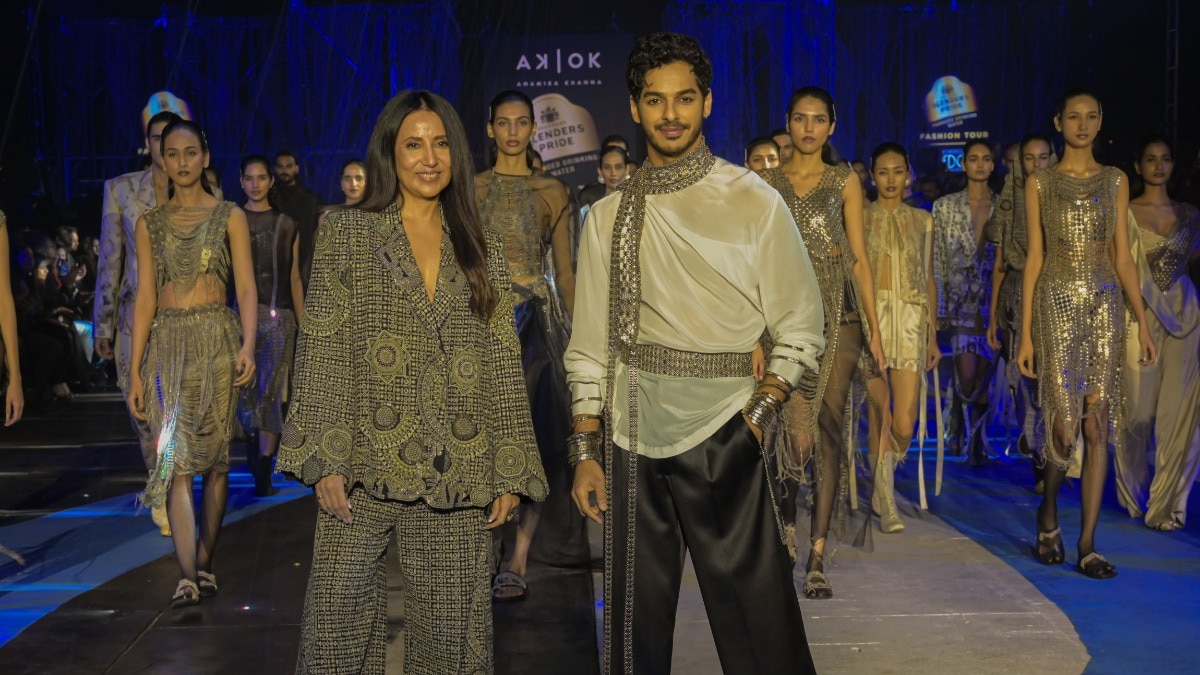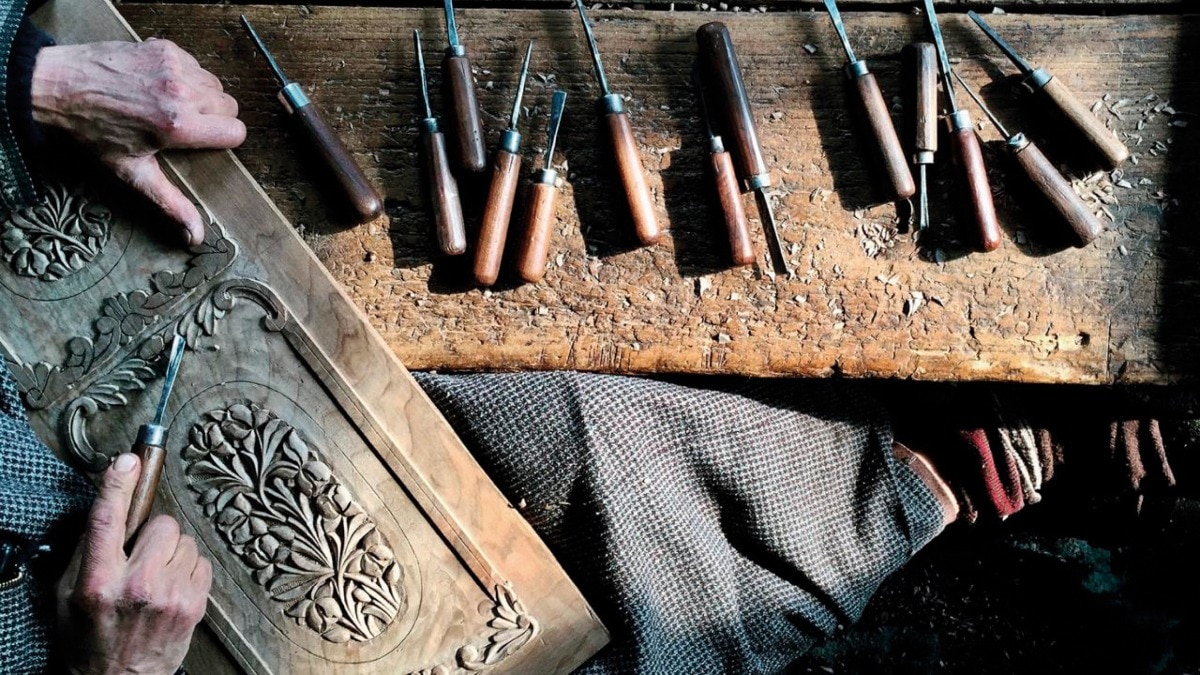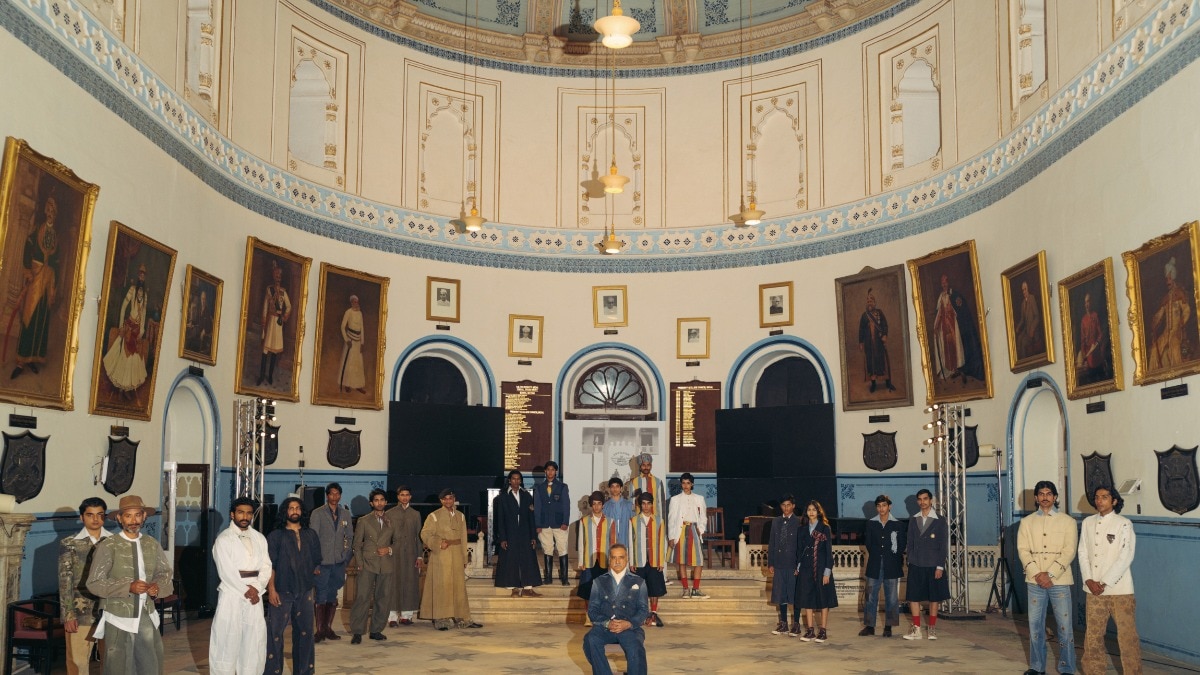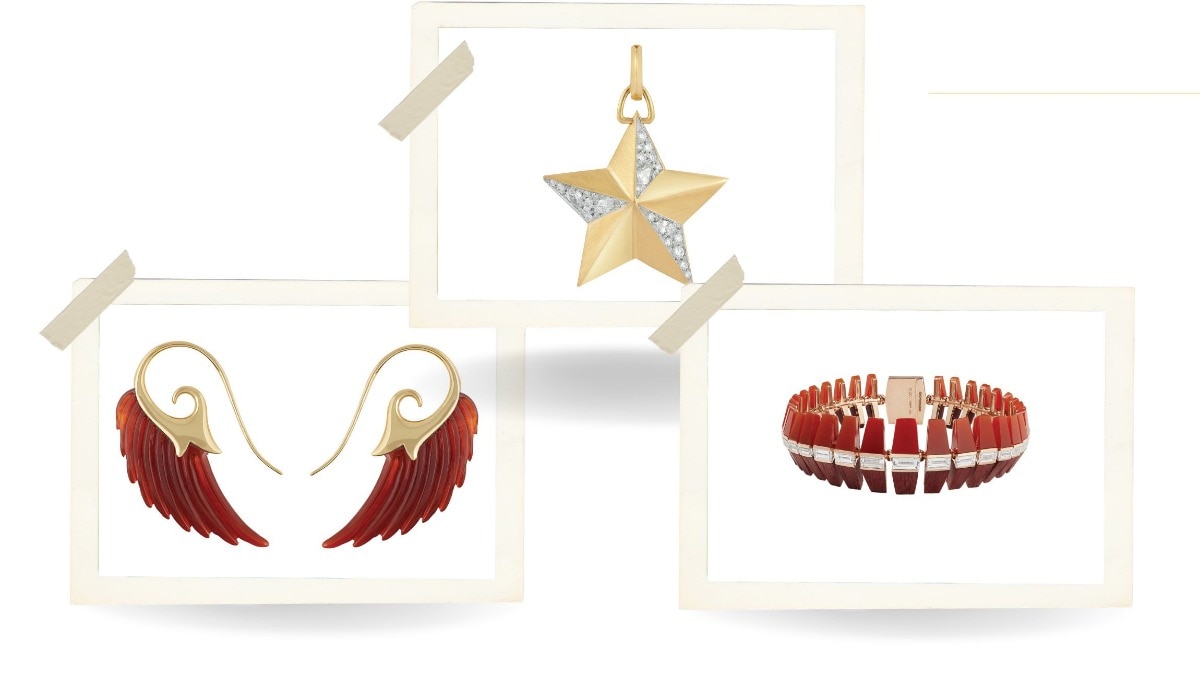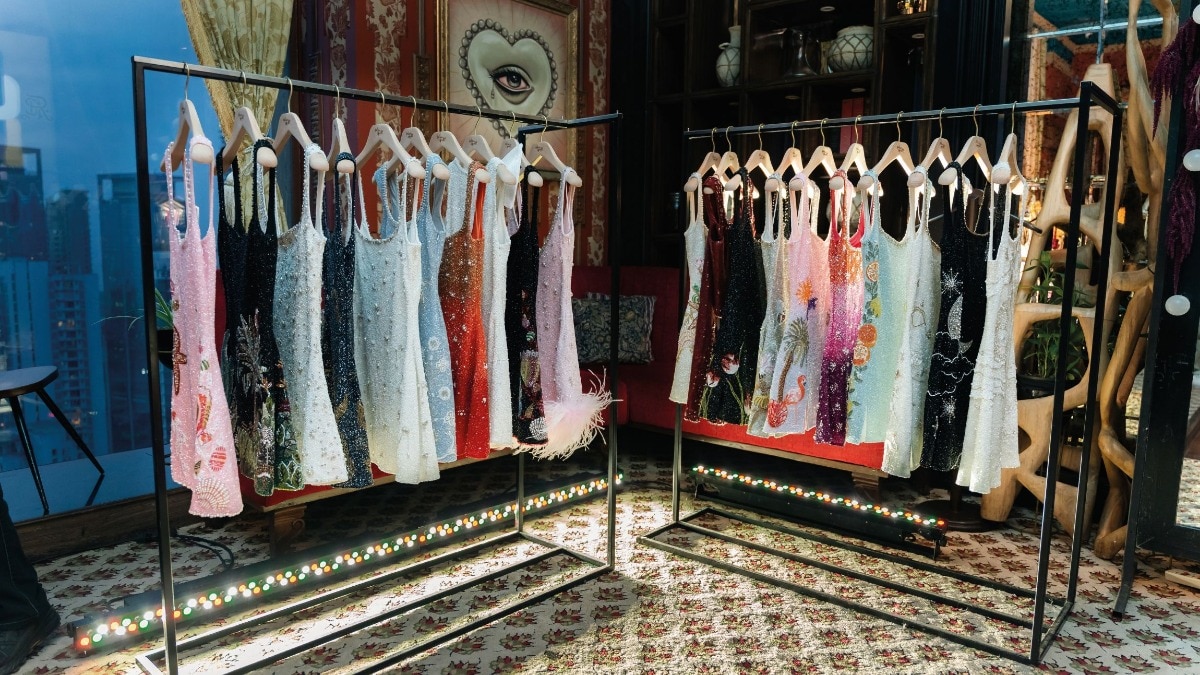
This restaurant gives India's cherished small plate experience the upgrade it deserves
Chef Niyati Rao speaks to Bazaar India about her latest venture, Bombay Daak, Mumbai's evolving culinary landscape, and more!


A celebrated name in the culinary industry, Chef Niyati Rao is known for her unique ingredient-driven, no-rules approach to cooking. As the creative force behind Mumbai’s highly acclaimed Ekaa, Chef Niyati Rao has managed to craft an experience that spotlights Indian ingredients in new, globally inspired ways, while celebrating each ingredient as the star of its dish.
Now, Rao has stepped into new waters with her latest venture Bombay Daak. The 30-seater bar, located in the heart of Mumbai, is reminiscent of a pre-colonial Indian bar with deep wooden interiors, hand-painted botanical tiles, an 80+-year-old Venetian mirror, and restored lamps from an old Bombay whiskey bar that just tie the place together beautifully.
The menu at Bombay Daak celebrates the memorable small plates and drinks that a lot of Indians associate with informal gatherings. Just like Ekaa, Bombay Daak, too. leans into Rao’s love for homegrown flavours. It focuses on food that is both nostalgic and surprising—traditional Indian ingredients are reimagined through Rao’s creative lens, creating a thoughtful tribute to regional tastes and stories that resonate with her roots. In a conversation with Harper's Bazaar India, Chef Rao delves into her culinary philosophy, the creative process behind Bombay Daak's menu, the similarities between the latter and Ekaa, and more.

Harper's Bazaar: Chef Niyati, can you tell us about your culinary journey and how it led to the creation of Bombay Daak?
Niyati Rao: My culinary journey began nine years ago at the Taj Group of Hotels, starting at the Taj Mahal Palace in Mumbai. I progressed from the Zodiac Grill to Wasabi, where I learned the significance of ingredients. Afterward, I moved to A Reverie in Goa, where the focus on exploration and innovation inspired me. Seeking international exposure, I applied to Noma for an internship, which turned into an unforgettable experience that extended beyond the original timeframe.
Upon returning to India due to the pandemic, I reconnected with Sagar Neve, my co-founder and life partner. He expressed a desire to start something new, and I shared my concept, leading to the creation of Ekaa, which took nearly two years to bring to life.
Bombay Daak showcases another side of me. In college, I enjoyed small plates with friends, which sparked my fascination with their diverse flavours. Although my fine dining career took precedence, I always dreamed of opening my own bar. When conceptualising it, I wanted to highlight the often-overlooked ‘daaru chakna’ culture, which, unlike tapas or antipasti, remains unrecognised despite its richness. My goal is to create a Daaru Chakna bar that redefines this culture in a fresh and appealing way.
HB: Is there a common thread—concept or flavours or approach towards ingredients—that ties Bombay Daak and Ekaa?
NR: I think the focus towards the ingredients, but even more on the technique is what really ties it. Because it's the same team who has actually come up with the concept. And, it's focused on less is more. And how the entire idea has to marry together from the interior to the thought, to the tiniest detail down to one photo frame, to the kind of lighting, to everything that revolves around the product. It's obviously going to be the same because it is the same ethos, it's the same company.

HB: You spent over a year researching India's food and drink culture. What were some of the most surprising culinary discoveries you made during this time?
NR: We spoke to around 112 people to create Bombay Daak, yet we haven't utilised all the knowledge they shared. This journey wasn't just about conversations; it was a lifetime experience. I traveled with my parents and their friends, recalling how the adults would have late-night drinking tables while I enjoyed the kaju pakoras they made. My mom always kept a separate plate of chicken and rasam ready for me, and these little details have made it onto the menu.
I remember the small egg fry served just for me. I realised that my mom didn’t always cook these dishes, which shaped my understanding of it. I didn’t need to drink to appreciate this unique side of food and the unwritten rules that come with it. During our travels, we'd occasionally stop at bars, where the food and drinks served left a lasting impression.
When speaking to others, I was curious about what you find in dive bars and in people's homes. I wanted to learn how people in Maharashtrian households eat and drink in the evenings—what they enjoy alongside their drinks and the variations across different regions. For example, Kolhapur differs significantly from Malvan, and there are countless communities in India yet to explore. In a Goan Catholic household, the chakna is very different from an East Indian household, illustrating the diverse eating and drinking cultures across India. This encapsulates a lifetime of data on the relationship between alcohol and small plates.

HB: What's your first or the fondest memory associated with chakna? Can you elaborate on how the menu at Bombay Dark showcases India's diverse culinary tradition?
NR: I think the fondest memories would be at home because my mother loved to entertain. They never drank, but they always had bottles for their friends. My mother is an amazing cook, and that goes for her innovative small bites. She made an amazing ghee fry with chicken hearts, livers, and gizzards, which I loved so much that my favourite parts of the chicken are the heart and liver. My brother and I would fight over the cartilage. And you would only get one cartilage in the chicken, so she would nicely cut it into half and give us such a tiny piece.
The other one is going to a bar with friends during college. It was smoky, smelling of blueberries and mint, and I had the best cheese chilli garlic naan—thick, fluffy, and perfectly charred—with a Pepsi. Since I don’t drink, that combo was my favourite. I finished an entire naan by myself and kept returning just for it, especially around four or five o'clock when they served hookah in the dark ambience.
HB: Can you tell us about the menu at Bombay Dark and how it showcases India's diverse culinary traditions?
NR: I think we summed it up in the first answer that I gave. We interviewed 112 people. When you interview 112 people from different castes and regions and different diversity. I think you really tend to encapsulate and you tend to understand how different we are all from each other and yet so alike. So I realised that I can't just serve the normal stuff that's being served in bars. I have to see what's being served in Bihar, I want to see what is being served in Rajasthan. I want to see what's being served in Odisha also. So I think that is how we've covered it. Honestly, this is more when you come and you read the menu, you'll truly understand.

HB: Do you think more and more restaurants are adopting the open kitchen concept? What is prompting this? How did you come about having one at Bombay Daak?
NR: I don't know about all the other restaurants, very frankly. I've always believed in having an open kitchen concept because I think it breaks the wall, literally and figuratively, between the kitchen staff, and the guests. I like that everyone sees everyone as equals and people know that there are real humans working there, what it takes and how the operations work. It's a different kind of showmanship and also the kind of trust and transparency that it actually brings upon us from the guests. I want them to feel like they're in safe hands, and hence, I have nothing to hide. And for that, I would love it if the guests could come inside the kitchen, speak to us, and see everything openly because we truly have nothing to hide. We are honest people doing very honest work. And I think it only adds to the experience when there's a baffling kitchen going on. It's a part of the music, It's a part of the vibe. That was my philosophy on the open kitchen because I think you get to see the hard work, You get to see what it takes to bring that beautiful dish to your table.
HB: In what ways does Bombay Daak's menu highlight local and seasonal ingredients?
NR: So, I think Bombay Daak has got to do more with stories and combinations of ingredients than an ingredient. That is a different approach this time because the dish is nice and I think the ingredients get highlighted. Of course, the ingredients are regional. And the combinations that are actually used are extremely regional to the particular cuisine. So, two or three dishes made, some ingredients might be common. Because the ratios are all different, the techniques that are applied to the ingredients are all different. They become what they're from a different region. and that is how they are made in those regions.
HB: The dishes are all said to be inspired by a particular story. Could you tell us one story behind one of the dishes?
NR: The Tangra Hangover was inspired by my stepfather—a complete Calcutta gymkhana kid—he would often tell us stories about going to Tangra House, Chinatown, at 3 am after drinking. That’s when they served breakfast in the 1980s and '90s, and they would enjoy plates of wontons and noodle bowls. He said it was the best hangover cure, even with more beer.
Then there's my mother. The chicken and rasam dish everyone loves at Bombay Daak comes from her tossing chicken with rasam, jaggery, and spices until the sauce thickens. It makes a great spicy snack or chutney with drinks. We also have my signature dessert, cheese cherry pineapple, which is pineapple sorbet with thick marinated syrup cherries, cheese cookie crumble, and a lot of cheese on top. It’s a twist on the classic cheese cherry pineapple served on cocktail sticks. Everything at Bombay Daak has a story behind it, and you’ll see that when you visit.

HB: Which is your favourite corner at Daak (except the open kitchen) and why?
NR: I have two favourite corners at Bombay Daak—I love the ledge seats that face the glass wall that overlooks the signage. Because you get this glimmer of orange. And I think those are my absolute favourite seats. People don't understand those seats, but they're actually the best seats in the house.
And the best seats in the house are near the bar and you can also talk to the kitchen chefs and bar team.
HB: How do you see Bombay Daak contributing to the evolving culinary scenes in Mumbai?
NR: Very honestly, nobody was talking about daaru and chakna. And now, it will be a conversation because when I speak to my guests at Bombay Daak every single day, I know how proud they feel. Because I know how proud I feel. And for me as an Indian, it's very important to highlight. If I have the power right now as a chef to influence people, this is my way of influencing them. By creating something that they would be proud of. By creating something where they would get their international guests at. And flaunt that this is how Indians drink and eat.
I'm not saying you can't get the people to the other dive bars. There are age-old establishments that I dearly love. But this is evolving with time and this is a new way to be accepted. And this is a new type of Indian dive bar that I've done, a Daaru Chakna bar.
And I think, I just want people to be really proud and to be really aware that our ancestors did new things. They were up to something and they were geniuses. And they've left so much amazing data for us to consume. And I'm just highlighting a few parts of it in my own little way.
HB: If you had to pick three beverages from your menu, which one would it be and why?
NR: I personally love Pahadi because it's very refreshing for a person who doesn't drink like me, I think it's perfect because no matter how spirit-forward it is, it is not overpowering for some reason. And it's extremely refreshing. It goes well with all kinds of fatty chaknas. So that's why for me, it's going to be Pahadi.
I think somewhere even Santra Season is absolutely yumm. People have told me that while taking the bottles away. Those two, I think would top my list. And we also have Naadan Kallu- a cocktail made with Coconut Toddy, Pickled Lemon, Pickled Peppercorn, I absolutely love that. It tastes like a very alcoholic version of Nimbu Achaar and Shikanji. It's absolutely divine!
HB: How did Swadeshi Sips get the name? What are you doing differently than a regular drinks menu?
NR: Swadeshi Sips earned its name because each drink reflects the essence of India's rich regional diversity. It offers an innovative take on traditional Indian liquors. These house-made spirits are a tribute to regional favourites found in ‘desi thekas’ (local liquor shops) across India, such as: kesar kasturi: A royal-approved liquor from Rajasthan, infused with saffron, dry fruits, flowers, herbs, and roots, zutho: A family-guarded recipe from Nagaland, made with rice, ranu, and water, santra: Maharashtra’s beloved concoction, featuring vodka and Nagpur orange, and bird’s eye chili wine: A Coorg-favourite featuring bird’s eye chilli and unpolished rice.
What sets us apart is how we reinvent these traditional drinks. For example, the santra you typically find is often a clear beverage with artificial flavours. We, on the other hand, use fresh Nagpur oranges to naturally infuse the drink, highlighting the authentic taste of Maharashtra’s famed citrus.
All images: VCK Communications
Also read: A Kashmiri chef is putting Himalayan cuisine on the Indian map
Also read: 11 culinary gems across the country you must visit before the year ends


